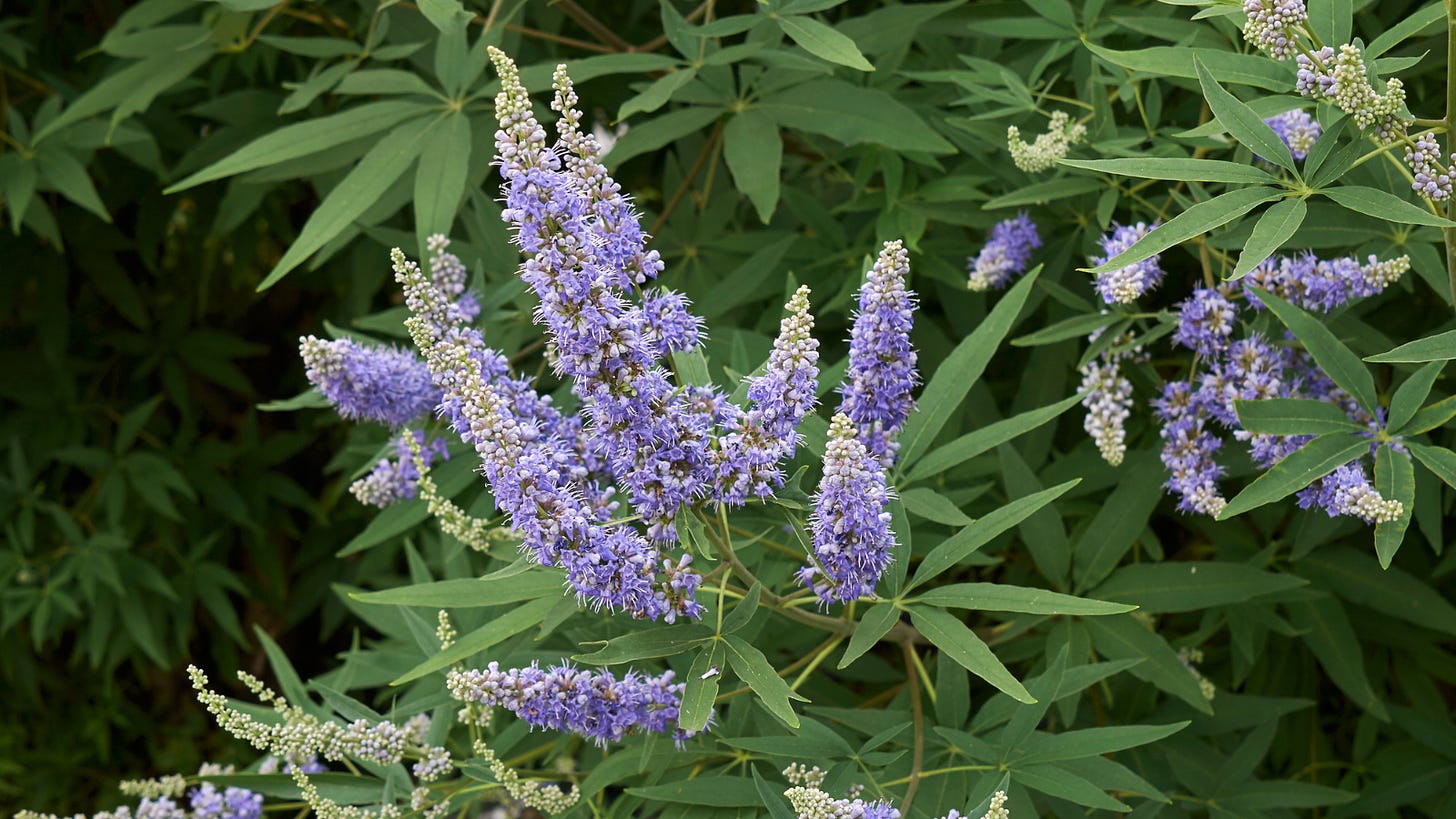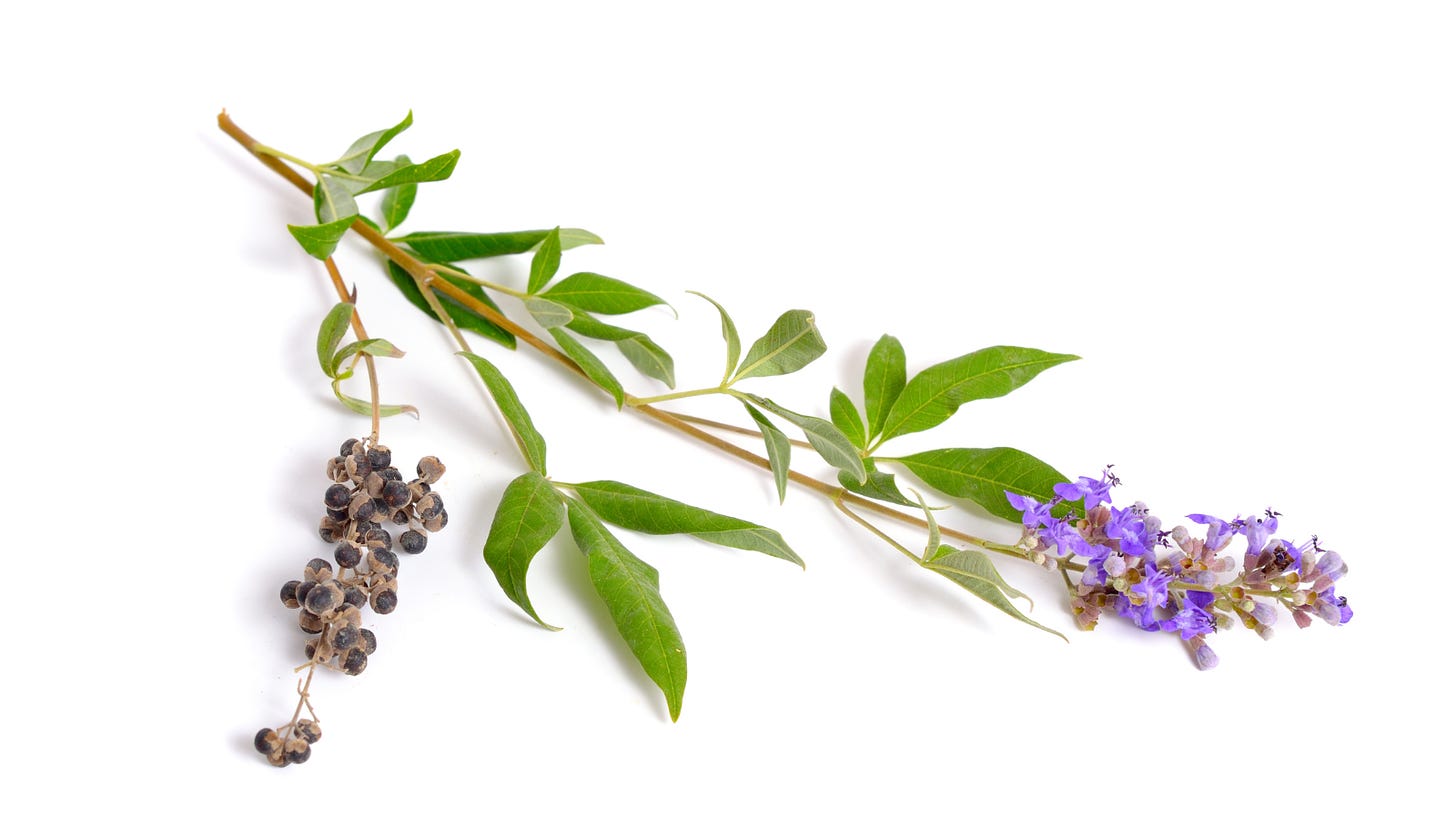Chasteberry for PMS
Premenstrual syndrome (PMS) affects three out of four women. Can chasteberry help?
Premenstrual syndrome (PMS) affects a significant number of menstruating women, with estimates suggesting that up to 75% experience some form of PMS. The symptoms of PMS are diverse and can range from mild to intense, encompassing both physical and emotional changes. Common emotional and behavioral symptoms include anxiety, mood swings, irritability, depression, changes in appetite and sleep patterns, and concentration difficulties. Physical symptoms often involve joint or muscle pain, headaches, fatigue, weight gain due to fluid retention, breast tenderness, and digestive issues. The intensity of these symptoms can vary greatly, with some women experiencing severe enough effects to impact their daily lives. Typically, these symptoms resolve within four days of the onset of menstruation.
A smaller subset of women suffer from a more severe form of PMS known as premenstrual dysphoric disorder (PMDD). This condition is characterized by debilitating symptoms that recur monthly, including severe depression, intense mood swings, anger, overwhelming anxiety, difficulty concentrating, and significant irritability. The impact of PMDD on daily functioning can be substantial, distinguishing it from the more common and less severe forms of PMS.
These conditions, while differing in their hormonal mechanisms, share some similarities, notably the increase in prolactin (PRL) levels. This elevation in PRL is believed to contribute to premenstrual symptoms and lactation challenges. There is evidence suggesting that premenstrual symptoms may coincide with a condition called latent hyperprolactinaemia (LHP), where PRL levels rise either before menstruation or in response to stress. This increase in PRL could potentially interfere with the development of the corpus luteum, leading to reduced progesterone production during the menstrual cycle's luteal phase. LHP has been linked to several issues, including premenstrual breast pain, benign breast cysts, and infertility.
Vitex agnus-castus L., also known as chaste tree or chasteberry, is increasingly popular in Anglo-American and European herbal medicine, especially for treating various female reproductive issues. There's a growing trend in Western cultures towards using complementary medicines, with women being the predominant consumers. Among these, chasteberry is frequently used for its therapeutic benefits in conditions like PMS, PMDD, challenges with lactation, fertility issues, and symptoms related to menopause.
The big question, of course, is does chasteberry help? What does the clinical evidence say?
Botanical Origins
Vitex agnus-castus is a shrub or small tree in the mint family (Lamiaceae). It features hairy, compound leaves and clusters of lilac to blue flowers and small berries. It originates in Europe and Asia and today is commonly grown as an ornamental plant.
Medicinal History
The fruits have traditionally been used to treat a variety of gynecological conditions, especially PMS and dysmenorrhea, as well as hormonally related acne. Perhaps most interesting is the use of the plant by men. In ancient Rome, women were known to use the fragrant chasteberry leaves to diminish their husbands' sexual desire. This plant is also known as “Monk's pepper” or “Monk’s berry”, a name derived from the practice of monks who chewed the berries, incorporated them into their meals, and carried them in their pockets as a means to curb their sexual urges.
Chemistry
Chasteberry fruits contain a mixture of flavones and flavonoids, diterpenoids (vitexilactone), monoterpenes (limonene, pinene, and 1,8-cineole in the fruit essential oil), and iridoid glucosides (agnuside and aucubin). This 2022 review paper offers a comprehensive overview of chasteberry chemistry.
Mechanism of Action
Chasteberry works with different systems in the body to potentially ease symptoms of menopause and PMS. It interacts with various receptors, which are like docking stations for specific substances in the body. These receptors include those for estrogen (a key female hormone), dopamine (a neurotransmitter that helps control the brain's reward and pleasure centers), and opiates (which are linked to pain relief and feelings of well-being).
Prolactin (PRL) is a multifaceted hormone with over 300 biological roles, notably known for its maternal functions such as stimulating lactation in response to an infant's suckling. Additionally, PRL plays a significant role in stress responses, earning it the moniker of the "stress hormone." Stress, a factor in numerous conditions, is particularly influential in the development of neuropsychiatric disorders.
Chasteberry seems to influence the hormone prolactin (PRL), which is usually involved in breast milk production. Interestingly, slight increases in PRL can be a normal response to stress. Around the time of menstruation, prolactin levels can rise because of changes in the brain's release of dopamine, leading to some PMS symptoms like breast pain and mood swings. Research has shown that medications that increase dopamine can help reduce these prolactin levels and ease symptoms.
Apart from dopamine, natural compounds found in chasteberry also bind to estrogen receptors, acting somewhat like estrogen. This interaction has shown promising results in improving memory and cognitive functions in certain animal studies. However, there's some debate about how estrogen-like chasteberry really is, with different studies showing varying results.
Chasteberry's interaction with the body's opioid system (which helps in managing pain and emotions) might also help reduce PMS symptoms like depression, irritability, and pain. Lastly, studies on rats indicate that chasteberry can affect glands like the thyroid and adrenal glands, which are involved in hormone production, but the exact effects and implications of this are still being explored. This complex interaction between chasteberry and various bodily systems highlights its potential as a natural remedy, but also underscores the need for further research.
Clinical Evidence
In a systematic review of 12 clinical trials conducted on chasteberry and PMS, researchers noted generally consistent results across the trials. In treating physical and psychological symptoms of PMS, chasteberry extracts generally outperformed placebos in all but one of six placebo-controlled studies. Other major findings included:
PMS: Chasteberry versus Placebo
Chasteberry extracts were more effective than placebo in four out of five studies, significantly improving total PMS symptoms.
Studies demonstrated chasteberry’s superiority in reducing a range of symptoms, including mood alteration, anger, breast fullness, and headache, but not in pain or food cravings.
Individual symptoms like nervousness, depression, breast pain, and bloating showed marked improvement with chasteberry, except for jitteriness/restlessness where a soy-based placebo was more effective.
PMS: Chasteberry versus Other Comparators
Chasteberry showed similar efficacy to vitamin B6 (pyridoxine) in reducing PMS symptoms, with a comparable percentage of symptom reduction.
Compared to magnesium oxide, chasteberry was more effective in alleviating back pain, menstrual pain, breast fullness, headaches, irritability, and sleep issues.
After a washout period, re-administration of chasteberry in the luteal phase proved superior to no treatment in alleviating various symptoms.
PMDD: Chasteberry versus the Antidepressant Fluoxetine (Prozac)
In treating PMDD, chasteberry showed a 57.9% clinical improvement compared to 68.4% with fluoxetine, indicating fluoxetine may be more effective for psychological symptoms, while chasteberry may be more suited for physical symptoms.
A second study reinforced fluoxetine's superiority over chasteberry in addressing depressed mood, work interest, anxiety, and general somatic symptoms.
Safety and Toxicology
Reported side effects are generally minor, including nausea, gastrointestinal issues, fatigue, menstrual changes, acne, and skin reactions. However, there's a lack of conclusive evidence regarding its effects on estrogenic and progesterone activity and its impact on lactation, with conflicting reports suggesting it may either stimulate or decrease milk production due to its influence on prolactin levels.
The Takeaway
Unlike many other herbal ingredients, chasteberry has been subjected to a good number of clinical studies with fairly consistent outcomes in activity above that noted in comparison to placebo. These findings, combined with the data on safety, support the likelihood of this being an overall safe and effective herbs for use in addressing women’s health needs for alleviation of PMS symptoms.
While I couldn’t find any scientific evidence behind the historical use of the plant to depress the male sexual appetite, this is certainly something worth exploring in future studies. The role of chasteberry in regulating prolactin has implications well beyond women’s health, as prolactin, commonly known as the “stress hormone,” affects both men and women.
Yours in health, Dr. Quave
Cassandra L. Quave, Ph.D. is a scientist, author, speaker, podcast host, wife, mother, explorer, and professor at Emory University School of Medicine. She teaches college courses and leads a group of research scientists studying medicinal plants to find new life-saving drugs from nature. She hosts the Foodie Pharmacology podcast and writes the Nature’s Pharmacy newsletter to share the science behind natural medicines. To support her effort, consider a paid or founding subscription, with founding members receiving an autographed 1st edition hardcover copy of her book, The Plant Hunter.
Available in hardcover, paperback, audio, and e-book formats!







